Join More Than 50,000+ Subscribers and get latest camera news and rumors
NEW CAMERA VIDEOS ON YOUTUBE
|
By admin, on January 7th, 2025
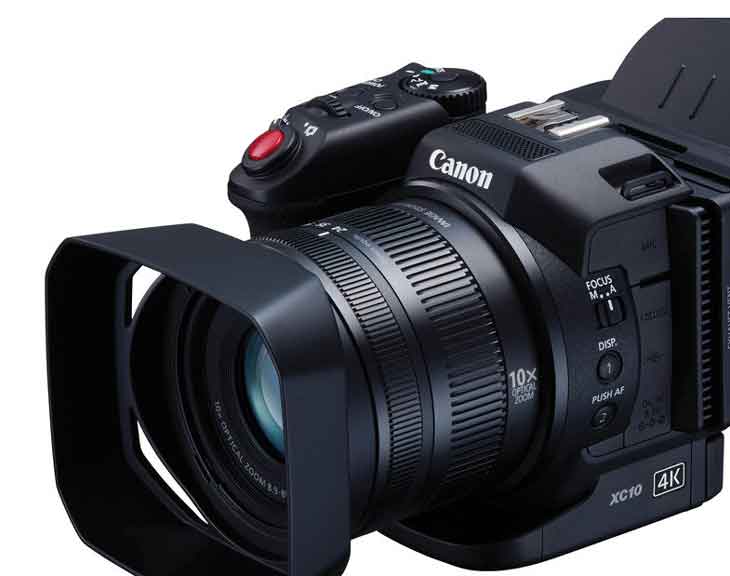
Is Canon working on an RC [consumer cinema] camera? According to the latest rumor that surfaced on the web via Canon rumor mil, Canon is working on an RC series of video-focused hybrid cinema cameras, similar to what we have seen in a Sony FX30. So, it will be a hybrid cinema camera in a compact, budget-oriented, reasonably-priced body aimed at a larger consumer base.
At the same time, Canon does have very capable full-frame and APS-C cinema sensors. Specifically, the sensor of the Canon R8 camera is a very well-known high-performing sensor. If it comes in a cinema body with all sorts of features that we cinematographers need at a reasonable price, then it will definitely become a market success.
But again, at the time of writing this article, the source of the information does not confirm whether it is an APS-C or a full-frame model. As soon as we get any information related to that, we will update you.
Also take a look at – Canon Upcoming Cameras 2025
Get LIVE RUMORS –> FACEBOOK | TWITTER | INSTAGRAM to get live news + Canon rumors 24X7
source – canonrumor.com
By admin, on January 3rd, 2025
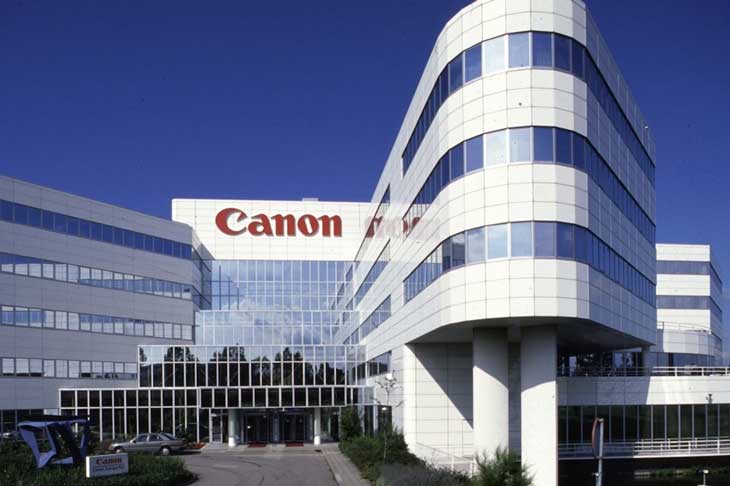
A recent press release from Canon suggests a major change inside, Canon U.S.A. has promoted several leaders to new roles, starting January 1, 2025. Kiyoshi Oka is now the Executive Vice President of Marketing Strategy, and Masato Mori is the Senior Vice President of Business Innovation. Four others, including Karin Harrington, William Lowe, Dawn Rouse, and Jami Schultz, have been promoted to Vice Presidents in various departments. Canon’s CEO, Isao “Sammy” Kobayashi, highlighted these promotions as key to driving success and innovation in the year ahead.
Take a look at the official press release from canon
Canon U.S.A. Announces New Executive Appointments for 2025
MELVILLE, N.Y., January 3, 2025 – Canon U.S.A., Inc. is proud to announce new executive promotions, effective January 1, 2025.
Kiyoshi Oka has been promoted to executive vice president and general manager, Marketing Strategy Unit, while Masato Mori has been promoted to senior vice president, Business Innovation Group. Additionally, four executives have been promoted to vice president, including Karin Harrington (Business Partner Group), William Lowe and Dawn Rouse (Client Services Group) and Jami Schultz (Corporate Human Resources).
These new appointments represent Canon’s strong commitment to elevating its employees and placing them in positions to succeed, further solidifying Canon’s position as a leader in digital solutions.
“It is critical to have strong leaders to guide our organization, and I’m delighted to announce these executive appointments for a group of well-deserving individuals who have been so dedicated to our success,” said Isao “Sammy” Kobayashi, President and CEO of Canon U.S.A., Inc. “We are looking forward to a successful 2025, and I’m confident these appointments will contribute greatly to achieving that goal.”
Get LIVE RUMORS –> FACEBOOK | TWITTER | INSTAGRAM to get live news + Canon rumors 24X7
By admin, on December 28th, 2024
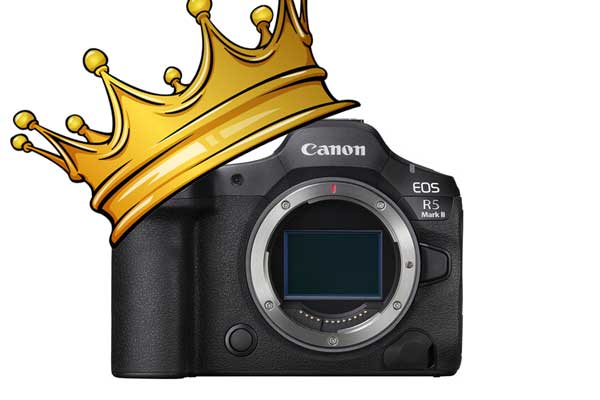
The map camera ranking for December is out now. The best camera is the Canon 5 Mark II, and just below that, we have the Canon R1. Despite having a high price tag, the top two models are Canon, and just after that, we have a Sony A7C Mark II camera. Slowly but steadily, the Z50 II ranking is also rising. Right now, we have Z50 II at number 5. Take a look at the list below
December 2025 MAP camera Rakings
- Canon EOS R5 Mark II body
- Canon EOS R1 body
- Sony α7C II with zoom lens kit
- Sony α1 II body
- Nikon Z50 II with dual zoom lens kit
- Sony α7C II body
- Fujifilm X-M5 with XC 15-45mm F3.5-5.6 OIS PZ lens kit
- Sony VLOGCAM ZV-E10 II with dual zoom lens kit
- Canon EOS R6 Mark II body
- Canon EOS R50 with dual zoom lens kit
Also look at – The top 10 Best Cameras Under $500 in 2025
Support us – Use or affiliate link Amazon.com | B&H Store for the next purchase u make – it helps us 🙂
Follow us on our social pages FACEBOOK | TWITTER | INSTAGRAM to get live Camera News +
By admin, on December 22nd, 2024

The CES 2025 event is scheduled to happen from January 7 to January 10 in Las Vegas. Different types of tech brands come from across the globe to showcase their innovative products at this particular event.
Now, from Nikon this year, Nikon will showcase an Innovative in-vehicle camera system co-created by Nikon and Mitsubishi Fuso to be exhibited at CES 2025 and we are expecting they will also showcase their recently announced Nikon Z63 and Z50 2 cameras, and we may witness some of the cinema camera prototypes that Nikon is working on.
Like every year, Canon will be showcasing its compact prototypes at the event.
During the CES 2025 event, Sony has an extensive presence and has booked multiple halls. At the same time, we are not sure, since Alpha Universe and other websites haven’t listed any of their events in the January month of their scheduled calendar.
Apart from these three camera makers, we also have Fujifilm Corporation attending the event. We are expecting the presence of the Fujifilm medium-format cinema camera prototype that we saw a few weeks ago. Upcoming Fuji Cinema Camera Explained in 15 Points | Fuji Cinema Camera A Closer Look
Panasonic has also booked multiple halls since they have a huge presence in the consumer electronics market. At this same time, we are not able to find any registered Booth name with Lumix, which is the brand name used by Panasonic for their mirrorless cameras. It will be interesting to see whether Panasonic Corporation will allow the imaging division, Lumix, to showcase their products in their booked halls or not, so we have to wait for that.
We will share more information if we get any updates related to other camera makers and upcoming products.
CES 2025 – Nikon Booth Details
LVCC, Central Hall – 19504
Nikon in a recent press release mentioned
“Innovative in-vehicle camera system co-created by Nikon and Mitsubishi Fuso to be exhibited at CES 2025”
Camera with an optical lens system with telephoto and wide-angle functions to be exhibited at CES 2025
Nikon Corporation (Nikon) will exhibit an innovative in-vehicle camera system co-created with Mitsubishi Fuso Truck and Bus Corporation (MFTBC) at CES 2025. The camera features an optical lens system with both telephoto and wide-angle lens functions, enabling users to see far away and also check their periphery at the same time.
We will have our camera gear for the rest of the booths. Although I was expecting to see a cinema camera working prototype in the show, let’s hope for the best.
Canon Booth Details
Booth – Venetian Expo, Hall G – 61101
Back in 2024, Canon displayed several prototypes of their working compact models [Canon’s previous year cameras displayed at the CES show]. Now we are waiting for 2025, and I do hope and expect we will see attractive prototypes from Canon at this CES 2025
SONY Booth Details

More than two halls of space are booked for Sony and their subsidiary divisions, but at the same time, we don’t have information on whether Sony’s imaging division is also attending CES 2025 or not.
Sony official website ALPHA universe haven’t listed any Sony ALPHA imagine event in the month of January 2025

FujiFilm North America Corporation
Booths – LVCC, North Hall Mtg Rms – N104
Panasonic Booth Details
Booth –
LVCC, Central Hall – 16605
LVCC, North Hall Mtg Rms – N245
LVCC, North Hall Mtg Rms – N246
LVCC, North Hall Mtg Rms – N247
Venetian, Lvl 4 – Zeno 4804
Stay tuned, Stay updated
Get LIVE RUMORS –> FACEBOOK | TWITTER | INSTAGRAM to get live Camera News
By admin, on December 21st, 2024
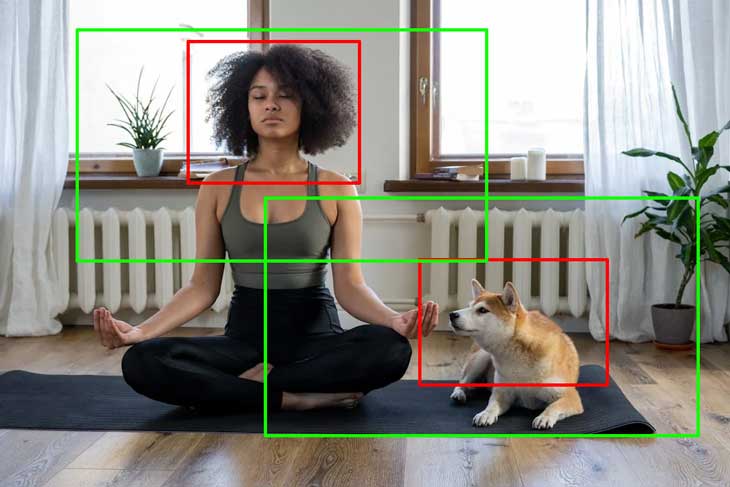
We have already seen the auto area framing of the Sony cameras that have been popular quite a bit among content creators, and the auto area framing is typical, as we have seen, and now works on a single subject. At the same time, it has multiple boxes, typically three different sizes available: one is small, medium, and large. Once you select one of the boxes, the camera automatically frames your subject and crops it in the video’s final version, so it seems like someone is shooting your video. It is really helpful to content creators, those who shoot with wide-angle lenses and create videos and vlogs of their daily life routine, or, let’s say, their cooking videos. In this specific area, the auto area AI framing works very well.
Canon AI Auto Framing Tech Tracks, Crops, and Save
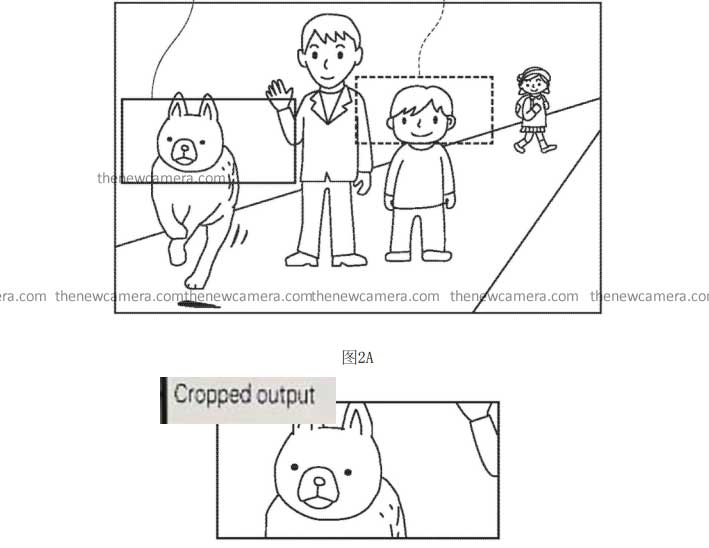
We recently saw a patent stating that Canon is also working on auto AI framing technology. In this technology, the camera automatically frames the subject depending on the user’s choice and saves cropped portions of the video to the SD card (of your choice), or you can say as a final product.
After looking at the details, it is very clearly visible the camera will save multiple video clips of the same video by cropping in on the selected multiple subjects in a single frame. It might depend on the user which clip they want to keep and wish to delete. The other option is they can tap on the subjects, either subject A or B, so that the camera will only save the clip of the subject that has been selected by the user among the multiple subjects present on the screen.
Canon Updated Menu System with AI Auto Framing

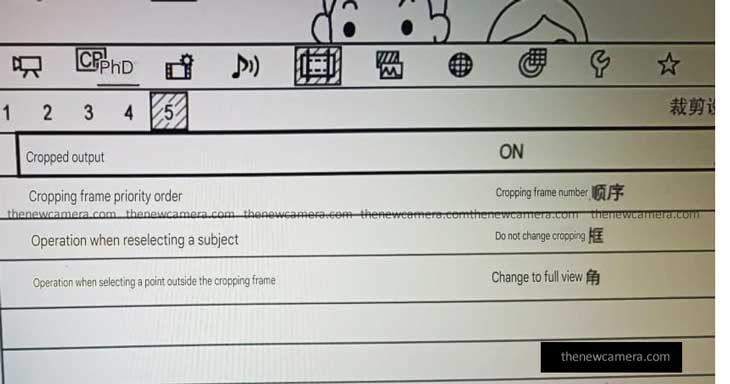
Canon AI Auto Framing Coming in Canon R6 Mark III or Canon R7 Mark II?
We may see the AI auto-framing feature of the Canon cameras in the upcoming Canon R6 Mark III and the Canon R7 Mark II cameras since it’s not a kind of hardware thing. In general, when Canon does a hardware patent, it generally takes 2 to 3 years. Still, since this is a software-based patent and the working principle of the AI auto-framing is solely dependent upon the DIGIC accelerator chip present inside Canon cameras, once introduced with the Canon R6 Mark 3 as well as R7 Mark 2, later on, these updates will be processed over the cameras with an AI accelerator chip inside them.
Even in the screenshot of the menu that I shared with you, you can clearly see the camera has dual card slots inside it. That indicates none of the entry-level cameras will have these features. As of now, only the cameras with the AI accelerator chip and dual card slots, which indicate a professional body, will have the AI auto-framing capability.
Support us – Use or affiliate link Amazon.com | B&H Store for the next purchase u make – it helps us 🙂
By admin, on December 18th, 2024
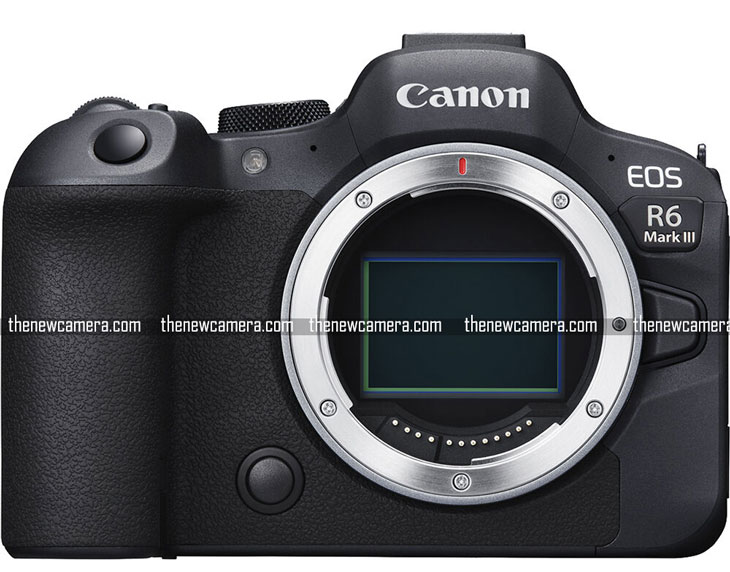
According to the latest rumors from trusted rumor mills, the R6 Mark III camera will have a display screen design similar to the Sony A7R5 camera. That means it will feature a tilting and a very versatile display screen altogether.
The second improvement that we will witness is the use of an OLED monitor on the back display portion of the camera. Currently, Canon uses an LCD-type display, whereas other brands like Nikon, Sony, and Fuji use OLED. So for now, let’s hope and expect a massive improvement in the display part of the camera.
Other specifications of the R6 Mark 3 camera are said to remain the same as we have discussed earlier. That includes the 24MP stacked sensor, which is directly coming from the Canon R3 camera, 30 FPS of continuous shooting speed with electronics, and, of course, all the rest of the core specifications you can see below.
- 24-megapixel LC1720 sensor.
- DIGIC Accelerator accelerated processor, 8.5-stop collaborative image stabilization.
- Same focus system as EOS R5 II.
- Highly reliable 14-bit 30fps RAW electronic shutter continuous shooting, reading speed 1/180s.
- In-camera neural network noise reduction and high-resolution magnification.
- Supports XF-AVC S and XF-HEVC S recording of C4K/120p (S35) and 6K oversampled C4K.
- Supports 6K30p and 4K60p (S35) Cinema RAW Light recording.
- OLED monitor on the rear display with a versatile tilting and rotating design, similar to the Sony A7R5.
And one important thing to note down is that you will not be getting an eye-tracking electronic viewfinder in this segment. That is the R6 Mark 3. Yes, you will have an improved electronic viewfinder compared to the predecessor, but again, no eye-tracking is coming in this particular segment.
Also take a look at – Canon Upcoming Cameras 2025
Get LIVE RUMORS –> FACEBOOK | TWITTER | INSTAGRAM to get live news + Canon rumors 24X7
source – canonrumors.com
By admin, on December 12th, 2024
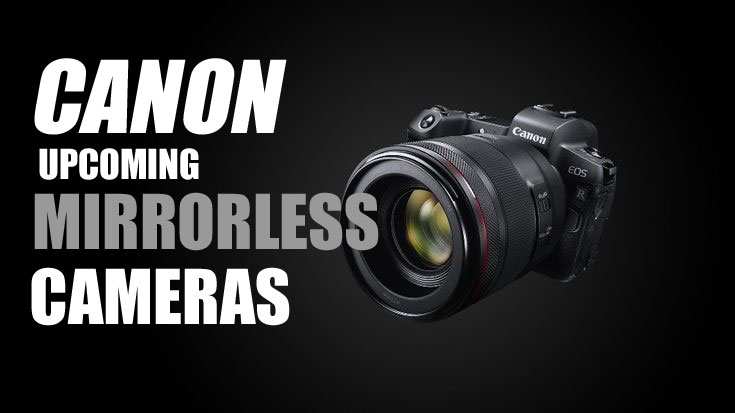
Upcoming Canon Mirrorless Camera 2025 – So get ready to be blown away by the list of cameras that are expected to arrive in 2025 from Canon. These cameras will lead the field in photography and videography on their terms. The Canon R1X flagship is still under development and is rumored to be announced in 2025. Apart from this, you also have rumors related to the Canon R5 C Mark II camera and its development. All these rumors have been summed up in the article below, and this article will be updated as we get any reliable information on upcoming cameras. So stay tuned, as we are going to bring out as much detailed information as possible related to Canon’s upcoming releases.
Nikon Upcoming Camera 2025 | Sony Upcoming Cameras 2025
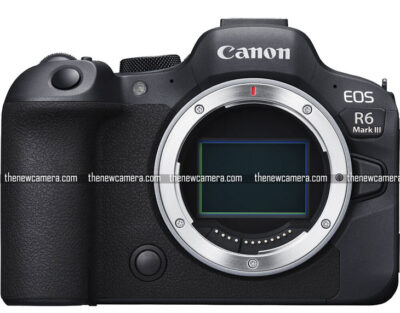
1. Canon R6 Mark III
The Canon R6 Mark III camera is rumored to feature the same 24-megapixel stacked CMOS sensor that we have seen in the Canon R3 camera, the camera will upscale the market competition to the next level with its features resembling with Canon R3, the Canon R6 Mark III camera will arrive sometime in 2025 (possibly in Q2-Q3 of 2025).
Canon R6 Mark III Rumored Specification
- 24mp (same sensor as of the EOS R3 sensor)
- Mechanical shutter / Electronic Shutter
- No mentions of stills FPS
- Improved DIGIC X, but no DIGIC Accelerator
- CFexpress & SD UHS-II card slots
- 4K 120P
- FullHD 240P
- Same EVF as the EOS R5 (So no eye-controlled AF)
- Improved IBIS performance
- Improved focus sensitivity
- Slightly heavier body (Nothing you’re likely to notice)
- Same 3.0″ LCD size (no mention of resolution)
- No mention of autofocus capabilities
From the specs, it looks like we will be getting a Canon R3 budget edition soon, the next update is about next APS-C format camera, the Canon R7 Mk II.
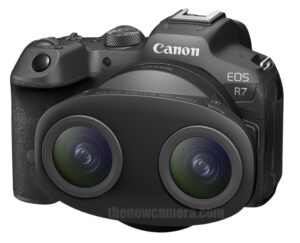
2. Canon R7 Mark II
The Canon R7 Mark II camera announcement is also due. As per the latest rumors, the camera will have a 32-megapixel stacked CMOS sensor. Not only that, but the camera will also have a readout speed of somewhere around 6 milliseconds, 4K video recording capability up to 120 frames per second, and 6K video recording at 60 fps.
Canon R7 Mark II Specification [Expectations ]
- 32.5MP Stacked APS-C CMOS Sensor
- Dual Pixel CMOS AF II
- 4K 120p 10-Bit Video, HDR-PQ & C-Log 3
- External 6K ProRes RAW Recording
- 40 fps E. Shutter, 15 fps Mech. Shutter
- Sensor-Shift 5-Axis Image Stabilization
- 3.69 m-Dot OLED EVF
- 1.6m-Dot Vari-Angle Touchscreen LCD
- Sensor-Shift 5-Axis Image Stabilization
- Dual UHS-II Memory Card Slots
- Multi-Function Shoe, Wi-Fi, and Bluetooth
The sources mentioned “Canon R7 Mk II is about to enter the production pipeline”, that means if the rumor is true then we will have a Canon R7 Mark II camera on or before Q4 of 2025.
3. Canon R1X
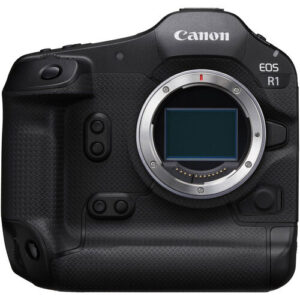
Rumors about the Canon R1X have also started circulating. It’s said to be a megapixel monster with a high-resolution sensor and faster readout speeds. So far, this is what we know. Other unconfirmed reports suggest that Canon is testing several prototypes with sensors ranging from 50 MP to 80 MP. We might see an 80 MP Canon R1X development announcement sometime in 2025.
Canon R1X (Unconfirmed Spes)
- 45-80 MP DPAF Sensor under test
- 8k 60FPS
- Dual CF Express Type B Card Slots
These are the initial specs available for the Canpn R1X camera.
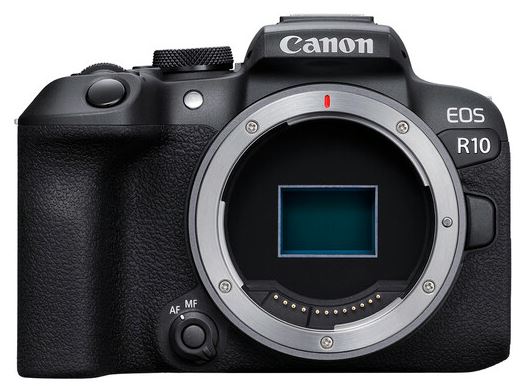
4. Canon R10 Mark II
Canon R10 Mark was announced back in May 2022, if we look back at DSLR time Canon was updating the mid-range Rebel series every 1.5 – 2 years, so we are expecting the Canon R10 Mark II camera for sure will arrive in Q3 or Q4 of 2025. The camera will use the same sensor as we have seen in the Canon R7 Camera with almost the same core specs we have witnessed in the Canon R7. Although the body design and card slot options will remain the same as of the Canon R10.
Canon R10 Mark II Rumored Specification
- 32.5MP APS-C CMOS Sensor
- Dual Pixel CMOS AF II
- 4K60 10-Bit Video, HDR-PQ (NO lOG)
- 15 fps Mech. Shutter
- 2.36m-Dot OLED EVF
- 1.6m-Dot Vari-Angle Touchscreen LCD
- Sensor-Shift 5-Axis Image Stabilization
- Single SD Card Slot
- Multi-Function Shoe, Wi-Fi, and Bluetooth
The next APS-C Camera in our list belongs to the Canon V-Series [Vlogging Series]

5. Canon Retro Styled Camera – The Canon QL 17 G Mark 3
We may see a Canon retro-style camera competing with Nikon ZF or Zfc cameras shortly. Yes, it is possible since during an interview when the interviewer asked about the possibility of a Canon retro film-style camera, a Canon representative said there is a significant number of people who really love film cameras and the more vintage look. Therefore, there is a possibility that Canon will address those needs from the industry.
This indicates that Canon is considering a retro-style camera in its lineup. The rumor is not new; before this interview, we published a rumor back on March 11th, 2024, According to the rumor
Early prototypes of to be announced Canon retro camera design are inspired by the image above (Canon QL 17 G Mark 3). One of the early prototypes is said to feature a full 24-megapixel CMOS sensor and a vari-angle display screen. Not only full frame there is which possibility that an APSC sensor-based retro camera is also under development. We do not have any Fixed time for the announcement of these retro-style cameras they are still under test and in the prototype stage. So if we expect it to arrive too early then it would be somewhere between the end of 2024 are the beginning first quarter of 2025
So, that is the latest set of information we have related to Canon’s upcoming retro-style camera.
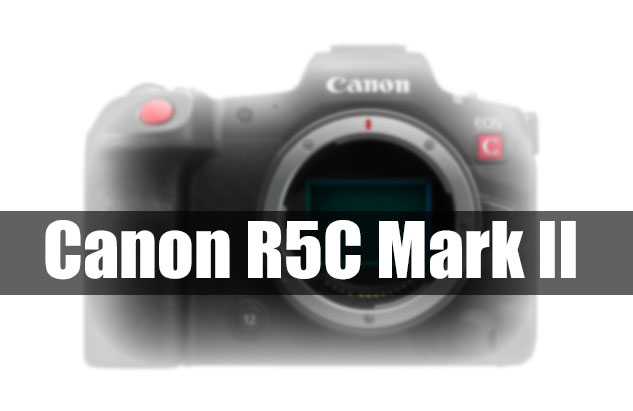
6. Canon R5C Mark II in 2026
There are strong rumors that Canon may announce the R5C Mark II camera shortly, just like we had with the previous announcement of the R5C. But as our source has suggested, yes, there are plans for the development of the Canon R5C Mark II camera, and the new Canon technical advisory team is also interested in bringing that camera to the consumer base. However, it’s not planned for 2024 or even 2025. As per their timeline, the Canon R5C Mark II camera is planned for 2026.

7. Canon V10 Mark II
Canon generally updates their compact cameras in one or two years, that’s the update cycle they generally keep with their compact cameras. The Canon V10 was announced back on May 2023, and now on May 2025 it will complete the two-year mark of its announcement date and hence it will become eligible for an update. The Canon V10 Mark II is expected to arrive in Q4 of 2025, (if everything goes as scheduled inside Canon). The upcoming camera will have a subtle update in the core specifications.
Expected Upgrades for the Canon V10 Mark II:
- 24.2MP 1″ CMOS Sensor
- UHD 4K up to 60 fps
- Full HD up to 120 fps:
- Dual Pixel CMOS AF II: Advanced autofocus system for accurate subject tracking in video and live streaming.
- Web Camera Compatibility with UVC Support: Seamless use as a webcam for live streaming.
- 1.04M-Dot 2.5″ Articulating Touchscreen LCD: Larger and higher-resolution screen with full articulation for easier framing in different orientations.
- Wi-Fi 6 & Bluetooth 5.2
- Vertical Video Capture with Auto Orientation
- Built-in adjustable Stand with 180° Range
- Improved Battery Life
- USB-C Charging & Power Delivery
Canon V10 Mark II Core Specification is based on our expectations, not a rumored core specification of the camera.
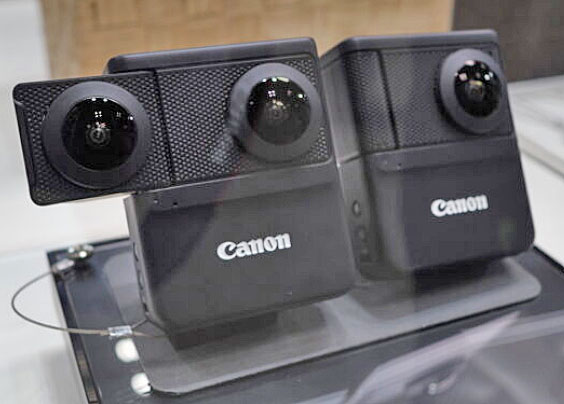
8. Canon Modular Cameras for 180° and 360° VR Video
Canon prototypes of 180-degree and 360-degree-based cameras and the initial prototypes were displayed in Yokohama, Japan (2023). These cameras are multi-purpose cameras able to record 3D 360 spatial videos too for Apple Vision PRO, we are waiting for their official announcement in 2025.
From Canon Patents – Expected List of Cameras
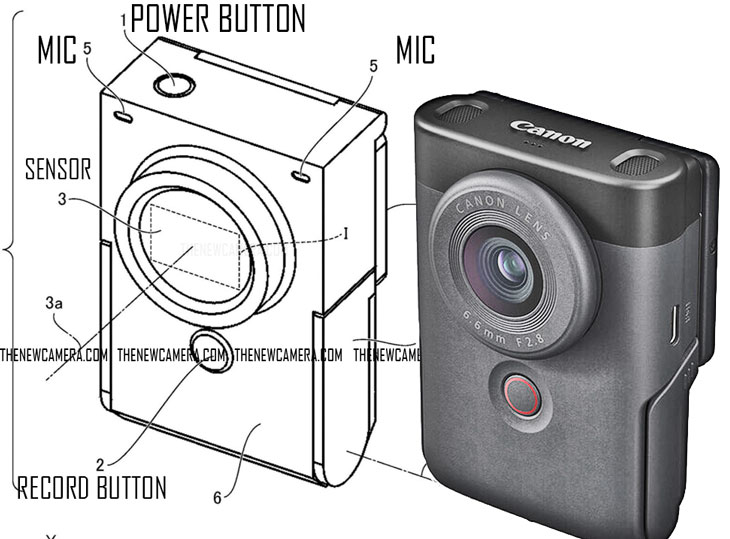
9. Canon V100 – Canon Vlogging Camera with Large sensor
Canon next next-generation vlogging camera patent surfaced in Canon patents as you can see in the image above, the design being shown in the patent is slightly different from the existing Canon V10 camera. Also, the sensor area shown in the figure resembles an APS-C sensor instead of a 1-inch sensor being used in the Canon V10 camera, take a look at the images below
Canon V1 / V100 Expected Specification
- 24.2MP APS-C CMOS Sensor
- DIGIC X Image Processor
- Dual Pixel CMOS AF II
- 4K30 Video, 4K60 with Crop;
- HDR-PQ
- IBIS (Enhanced EIS+ IBIS + OIS for Video)
- Background Defocus
- Face Priority AE
- Movie for Close-Up Demos Mode
- Vertical Movie Mode
- Directional Capsule Mic and Windscreen
- 15 fps E. Shutter
- No EVF
- 1.04m-Dot Vari-Angle Touchscreen LCD
- Wi-Fi and Bluetooth
Canon will surely expand its V- series vlogging cameras in 2025-26, since they are in very high demand and people are waiting for a direct compatitior of Sony ZV-series of cameras.

10. Canon Vision Pro – Virtual Reality Headset
Just like Apple Vision PRO, Canon is also working towards its own range of VR headsets, as usual, the VR headset is different from Canon MREAL X2, We all know that Canon is in partnership with Apple, as they are making special spatial Lenses for their Apple Vision PRO, and their content can be directly used on Apple iPhone platforms and the VR headset for augmented reality purposes. You can read the Full patent details here
When the Canon Vision Pro is Coming
as usual Camera makers like Canon take 2-3 years, once their patent is published, they do extensive research and testing beofre the announce the commerical version of the product. So, we can expect it sometime in 2026.

11. Canon Hands-Free Vlogging Compact Camera
Canon is also working in Hands hands-free vlogging camera, as you can see the cylindrical style camera can rotate up to 360 with a large display attached to the rear side of the camera. The Display part can stuck of smooth surfaces like Glass windows it’s very clearly mentioned in the patent. I am very much impressed by the design of the camera and let’s hope we will see the announcement of such a camera soon from Canon.

One more closer image of the camera
Canon future vlogging compact camera, The camera features a brand new moveable cylindrical camera unit that detects and tracks human + body face very effectively. The rear side of the camera we have a Display unit which is used for customization of camera basic settings.

12. Canon Patent Neckband Style Camera
The concept is truly unique and it will assist content creators in producing videos without exerting too much effort in holding their camera and creating content. more about the patent details here

13. Canon V1 – Fullframe Vlogging Camera
The Next Fullframe Vlogging camera that surfaced from the patent may use the Canon R8 Sensor and compact gimbal-style design, the overall design is very unique and advanced. But, this patent was done by Canon back in 2020, Maybe their marketing team waiting for the right time to announce such a product, otherwise it will become a too-advanced product without any direct competitor on the Row. we all know what happened with the Sony DSC R1 camera, it was an APS-C style compact camera announced back in Sep 2016 by Sony. But, at that time people were not ready for that type of advanced camera neither Canon nor Nikon were able to put a direct competitor of the same, so Sony never announced the next version of the same. Similarly, I think Canon’s marketing team is waiting for the right time. 165
Get LIVE RUMORS –> FACEBOOK | TWITTER | INSTAGRAM to get live news + Canon rumors 24X7
See a list of Canon cameras announced from 2018 – 2024 – Canon camera timeline
|
KEEP THIS BLOG ALIVE - Support New Camera Buy Canon Lenses, Buy Music CD or Digital Camera at amazon it helps this site, and you do not pay anything extra, it is just a way to help support this site.

|































